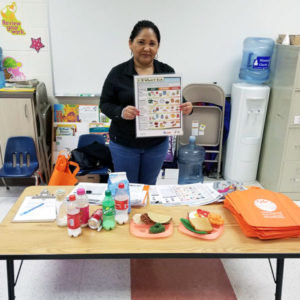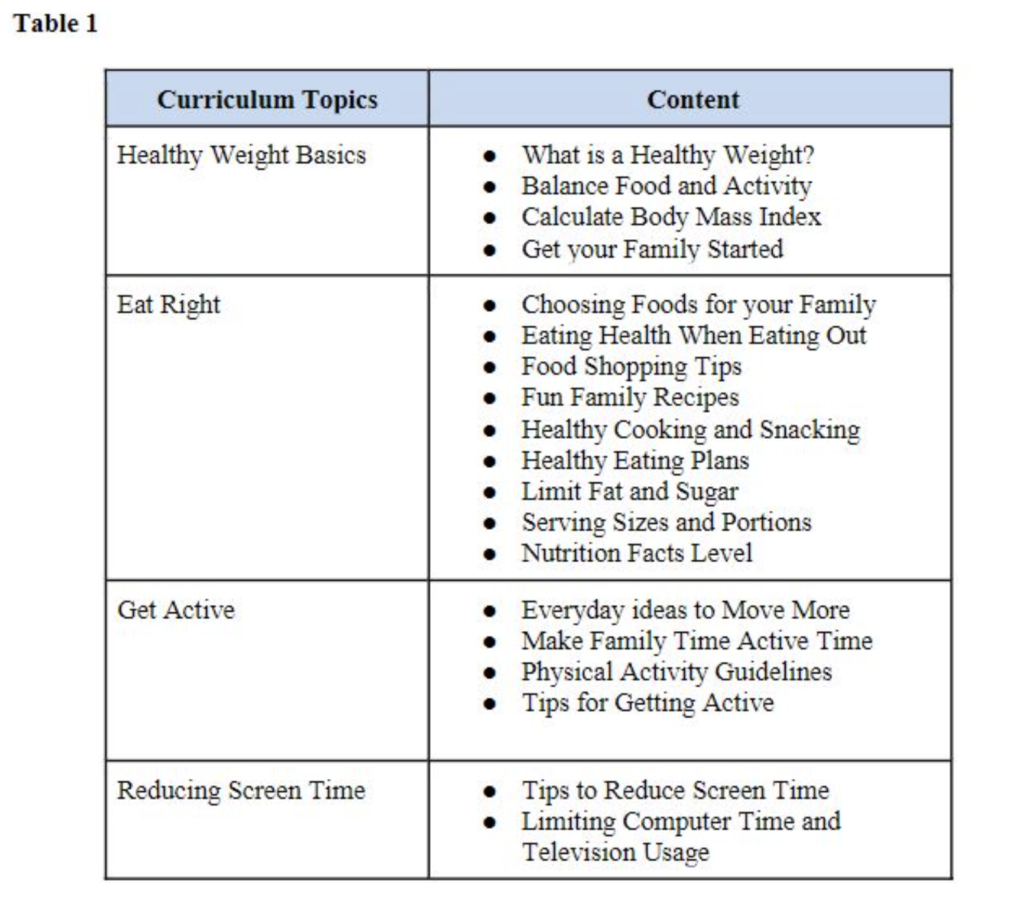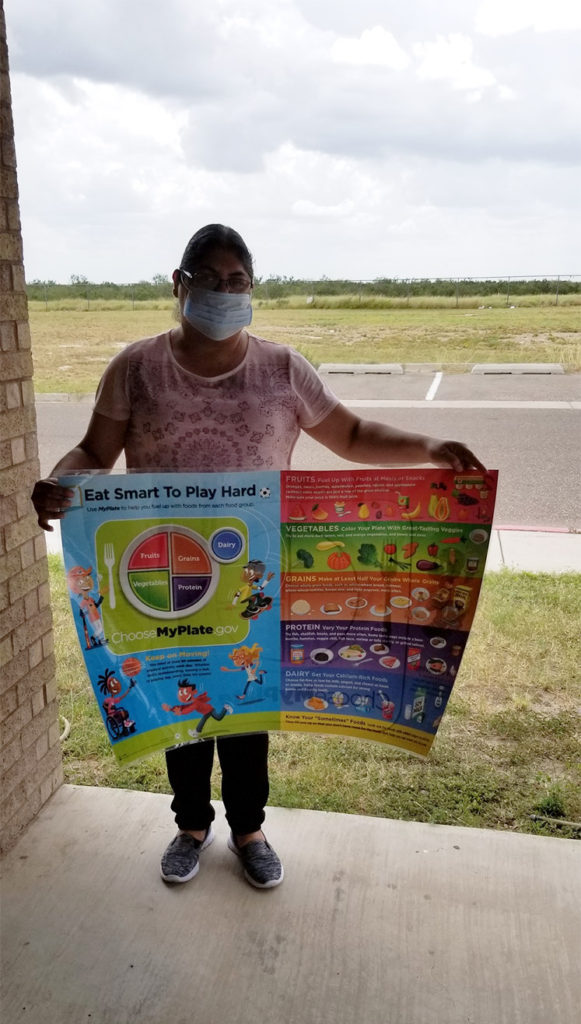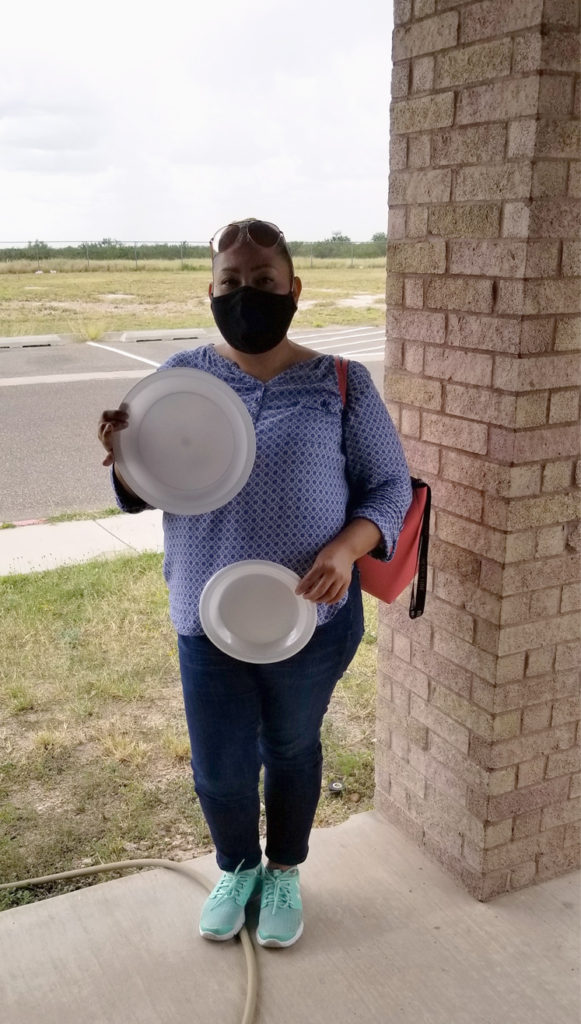As type II diabetes continues to rise, especially among our Latino population, it is important to educate our communities on the preventative measures and risk factors for this disease.[1] While most of these interventions focus on individual behavior change, more recent research suggests that a family-centered approach to chronic disease prevention provides promising results.[2] In this blog, we will discuss the importance of living a healthy lifestyle and how Community Health Workers play a key role in implementing family-centered diabetes interventions.
Importance of Living a Healthy Lifestyle
Adopting a healthy lifestyle is a key aspect of preventing type II diabetes. Healthy behaviors can reduce key risk factors for diabetes, like obesity, high blood pressure, and blood cholesterol.[3] Some important healthy behaviors include:
- Nutrition: Eating habits are important in preventing diabetes. Some basic recommendations are consuming healthy portions, including foods low in saturated fats and sugar, whole grain carbohydrates, vegetables, and fruits.[4]
- Physical activity: Physical activity can aid in controlling blood sugar, weight, blood pressure, and cholesterol and can prevent heart disease and uncontrolled diabetes which can ultimately lead to nerve damage. Physical activity of moderate-to-vigorous intensity (e.g. brisk walking, dancing, swimming, or cycling) is recommended for at least 30 minutes five or more days per week.[5]
- Stress Management: It is important to reduce stress for overall health, including preventing chronic diseases like diabetes. Some techniques for reducing stress include practicing relaxation activities, like meditation or yoga, spending time with loved ones, and increasing physical activity.[6]
However, incorporating these healthy behaviors into our daily routines can be challenging. Sometimes we do not have all the information we need to know what is healthy versus not; or we do not have the motivation to exercise regularly. Successful diabetes prevention programs include educational materials and activities to help people learn how to adopt healthy behaviors.[7] These programs are commonly facilitated by Community Health Workers (CHWs) or alike professions whose duties and tasks may be aligned to the CHW role (i.e. Promotor(a) de Salud, Outreach Workers, Health Educators, and Peer Specialists) to provide participants with culturally-informed resources and support.
Community Health Workers Are Key to Addressing Diabetes
Community Health Workers (CHWs) play a crucial role in implementing diabetes prevention programs. As trusted members of their community, CHWs provide culturally-informed care that empowers and educates their peers/patients.[8] CHWs are especially effective for diabetes programs that work with underserved communities because they provide tailored services to fit the unique needs of the community. For example, many diabetes or healthy behavior programs employ bilingual CHWs to deliver both culturally and linguistically-appropriate education. Successful programs also include activities such as individualized support through home visits,[9] community-based classes, or innovative one-on-one support (e.g. phone text reminders).[10] In these programs, CHWs are key to ensuring that communities are connected with diabetes prevention education and resources that meet their unique needs.
 Promoting Healthy Lifestyle Choices for the Entire Family
Promoting Healthy Lifestyle Choices for the Entire Family
Many people living with type II diabetes have a family history of the condition.[11] Therefore, it is important that diabetes prevention programs promote healthy lifestyle choices for everyone in the family. Family-centered diabetes interventions are important as they may positively influence patients’ diabetes outcomes, some examples include:
- Integrating a patient’s family into diabetes interventions (educational classes, support groups, etc.)
- Supporting family members’ communication skills to effectively influence patient health behaviors
- Educating and equipping family members about diabetes-care needs to help them understand the disease to effectively support patient with diabetes[12]
Family-centered diabetes prevention interventions have many benefits, including:
- Creating a supportive environment that encourages healthy lifestyle choices
- Educating the entire family on diabetes prevention and risk factors
- Promoting healthy behaviors to prevent diabetes for everyone in the family
Highlighting a Successful, Family-Centered Program
Juntos Podemos (Together We Can!) is a healthy lifestyle program led by CHWs in South Texas. This program supports Latino families who are on federal assistance programs, like Supplemental Nutrition Assistance Program (SNAP). The goal of the program is to promote the adoption of healthy lifestyle behaviors by educating families on better nutrition and exercise habits.[13]
The program consists of four 90-minute health education classes led by CHWs using the National Institute of Health’s, We Can! (Ways to Enhance Children’s Activity & Nutrition) curriculum. This research-based curriculum is designed to give parents/caregivers, and entire communities tangible tools to help them engage and educate their families on healthy behaviors. The curriculum provides bilingual (English and Spanish) information and educational resources on four main topics: Healthy Weight Basics, Eating Right, Getting Active, and Reducing Screen Time (for curriculum content detail, please refer to Table 1).9

Additionally, CHWs use the following strategies to engage participants during their sessions:
- Engaging in a 15-minute physical activity with fun, innovative exercises (i.e. zumba or dancing)
- Providing a healthy snack to participants and reviewing its nutritional value, so families are encouraged to incorporate healthier foods into their diets
- Using visuals and tangible educational tools (i.e., fat and sugar models) to educate participants on nutrition
Throughout each session, CHWs include examples that are relevant to their audience, such as common lifestyle habits or barriers that participants experience. This enhances participants’ engagement with the material and increases the likelihood of adopting healthier habits that are introduced.
CHWs are Key to Program Implementation
The CHWs in Juntos Podemos are successful because they share the culture, language, and values of the community they are serving. As Spanish-speaking Latinos living in South Texas and trusted members of their community, these CHWs are able to provide education and resources that are culturally and linguistically-appropriate. This has allowed CHWs to successfully implement in-person and virtual outreach, share relevant community resources, and recruit program participants.
Program Challenges and Successes
Since program sessions are typically carried out in-person, CHWs have needed to adjust how they deliver the program due to COVID-19 restrictions. This has included reducing class sizes and providing classes via phone or video conferencing. These methods have been welcomed by the community and proven successful.
Juntos Podemos has made a huge impact on the communities it served. In 2020, CHWs provided healthy lifestyle education to 9,771 community members, and enrolled 2,241 participants in the program’s health education classes. About half of these participants have reported an increase in their health knowledge, fruit and vegetable intake, and physical activity. Additionally, parents reported that nearly half of the children in the program increased their physical activity.[14]
Juntos Podemos is an example of a family-centered, CHW-led intervention that educates families on the importance of healthy lifestyle behaviors to reduce risk factors for diabetes. CHWs are key to delivering the program in a culturally-informed way that meets the needs of the community it serves.
(This blog is part of the Diabetes Prevention Across the Lifespan Series, a 4-part blog series published by MHP Salud and Health Outreach Partners.)
RESOURCES:
- We Can! Curriculum
- Juntos Podemos Program
- Disease Prevention and Management: Diabetes
- Living Healthy with Diabetes
- Addressing Diabetes Through Outreach: Innovative Outreach Practices from the Field
- Leveraging Technology to Support Outreach: Innovative Outreach Practices from the Field


HRSA Disclaimer: This article is supported by the Health Resources and Services Administration (HRSA) of the U.S. Department of Health and Human Services (HHS) as part of awards as follows: Health Outreach Partners (HOP) National Training & Technical Assistance National Cooperative Agreement totaling $932,014.00 with 0 percent financed with non-governmental sources and MHP Salud National Training & Technical Assistance Cooperative Agreement totaling $753,959.00 with 0 percent financed with non-governmental sources. The contents are those of the author(s) and do not necessarily represent the official views of, nor an endorsement, by HRSA, HHS or the U.S. Government. For more information, visitwww.HRSA.gov.
[1]https://minorityhealth.hhs.gov/omh/browse.aspx?lvl=4&lvlid=63#:~:text=Hispanic%20adults%20are%201.7%20times,compared%20to%20non%2DHispanic%20whites.
[2] https://www.ncbi.nlm.nih.gov/pmc/articles/PMC4624026/
[3] https://www.heart.org/en/health-topics/diabetes/prevention–treatment-of-diabetes/living-healthy-with-diabetes
[4] https://mhpsalud.org/portfolio/the-role-of-community-health-workers-addressing-diabetes/
[5] Ibid
[6] https://www.heart.org/en/healthy-living/healthy-lifestyle/stress-management/stress-and-heart-health
[7]https://www.cdc.gov/diabetes/prevention/lcp-details.html?CDC_AA_refVal=https%3A%2F%2Fwww.cdc.gov%2Fdiabetes%2Fprevention%2Flifestyle-program%2Flcp-details.html
[8] https://mhpsalud.org/our-chw-initiatives/community-health-workers/
[9] https://www.nhlbi.nih.gov/health/educational/wecan/about-wecan/
[10] https://outreach-partners.org/2012/07/01/innovative-outreach-practices-report/
[11] https://www.cdc.gov/genomics/famhistory/famhist_diabetes.htm
[12] https://www.ncbi.nlm.nih.gov/pmc/articles/PMC4624026/
[13] https://mhpsalud.org/programs/our-programs/juntos-podemos
[14]Juntos Podemos July 2020 Internal Program Report
